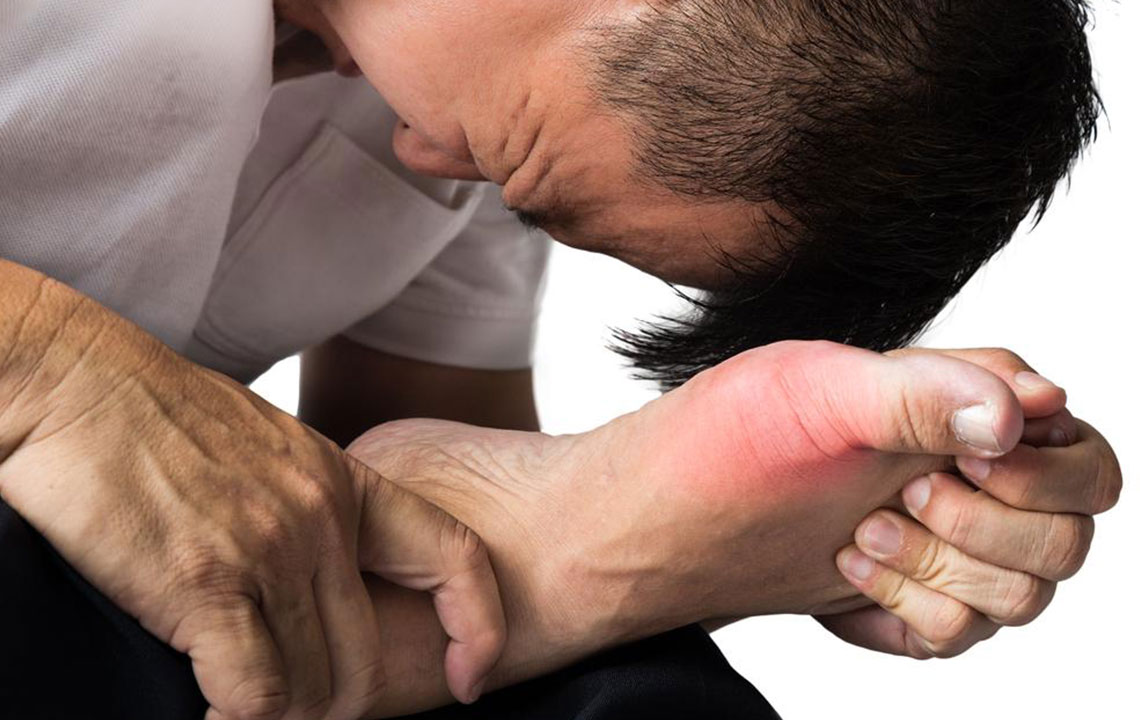Different Treatment Plans for Gout Pain Relief and Prevention of Gout Attacks

Gout treatment usually involves medicines. The choice of drugs by the doctor will depend on your present health condition and your own preferences. Gout medicines are used to treat an acute case of gout attacks and also to prevent future attacks. They also reduce the risk of several complications streaming from gout like tophi development from urate crystal deposits.
Drugs to Treat Gout
Medicines to treat acute gout attacks and prevention include:
Nonsteroidal Anti-Inflammatory Drugs or NSAIDs: NSAIDs include some of the OTC options like naproxen sodium and ibuprofen. More powerful prescription drugs include celecoxib and indomethacin.
The doctor may also prescribe you stronger dosage to end an acute attack along with low regular doses to prevent attacks in the future.
However, it is important to know that NSAIDs warrant stomach pain, ulcers, and bleeding.
Colchicine: Sometimes doctors also suggest pain relievers like colchicines. This medicine can effectively reduce gout pain. However, the intolerable side-effects sometimes prevent people from using it. Side-effects include vomiting, nausea, and diarrhea. As soon as an acute case of a gout attack is resolved, the doctor may suggest you light daily dose of colchicines to thwart future attacks.
Corticosteroids: Corticosteroids like prednisone help to control gout pain and swelling. They can either be taken in pill form or can be injected as well into your joint. This drug is reserved for people who neither can take colchicines or NSAIDs. Side effects of this drug include increased levels of blood sugar, mood changes, and elevated blood pressure.
Prevention of Gout Complications with Medications
If you are frequently suffering from gout attacks or the gout attack is less painful, your physician may suggest you certain medications to reduce gout-related complications. These are:
- Medications that block uric acid production: Drugs like xanthine oxidase inhibitors, allopurinol, and febuxostat control the amount of uric acid your body produces. Thus, by using this medicine, you can lower the uric acid production which in turn reduces the risk of gout attack. These drugs have specific side-effects. Allopurinol may cause low blood counts and rashes. Reduced liver function, nausea, and rash are some of the side effects of febuxostat.
- Medicine to improve removal of uric acid: Probenecid helps to improve the kidneys’ capability to remove uric acid from your system. Though this would lower the level of uric acid and reduce the risk of gout flare up this would increase uric acid levels in your urine. Side effects of this medicine include kidney stones, stomach, and a rash.
Home Remedies and Lifestyle
Though medications are the most effective and proven way to treat gout but making specific lifestyle changes and using some home remedies can also help in gout pain relief. Lifestyle changes include:
- Limiting the intake of alcoholic beverages along with drinks sweetened with fructose or fruit sugar. It is suggested to drink a lot of non-alcoholic drinks especially water.
- Limit intake of foods containing a high amount of purines like organ meat, red meat, and seafood.
- Exercise regularly and lose some weight if you are on the heavier side. Maintaining a healthy body weight reduces the risk of having gout to a great extent.
If you do not find any relief even after going through several of the above-mentioned treatment procedures, you may opt for alternative treatment as well. However, it is always suggested to take the advice of your doctor before opting for any kind of different treatment plan. Check with him about the various benefits and risks associated with the alternative treatment course. You must also know whether it would interfere with your present gout medicines. Since there is not much research available on alternative treatments; there is not much information on their side effects as well.
Certain food items have been known to prove beneficial to lessen the uric acid levels. These are:
Coffee: Studies show the relation between consumption of both regular as well as decaffeinated coffee and lower uric acid levels. However, there is no demonstration to back this theory that coffee has such effect. The available evidence is not enough to ask non-coffee drinkers to start with it if they have gout. The researchers, on the other hand, can take a cue from this and find out whether coffee can really be used as medicine to treat gout in the future.
Vitamin C: Vitamin C supplements can reduce uric acid levels in the blood. However, there is no actual study to prove the same. Ask your doctor how much vitamin c supplement you can consume without having to face any adverse side effects.
Cherries: Cherries can really lower the levels of uric acid and reduce the number of gout attacks in a person. Eating fresh cherries or drinking juice may give you a good support to treat gout. However, always ask your doctor about the amount you can take without the risk of any side effects.
Other options like deep-breathing exercises, relaxation techniques, homeopathic medicines can also be considered as effective gout treatment.


